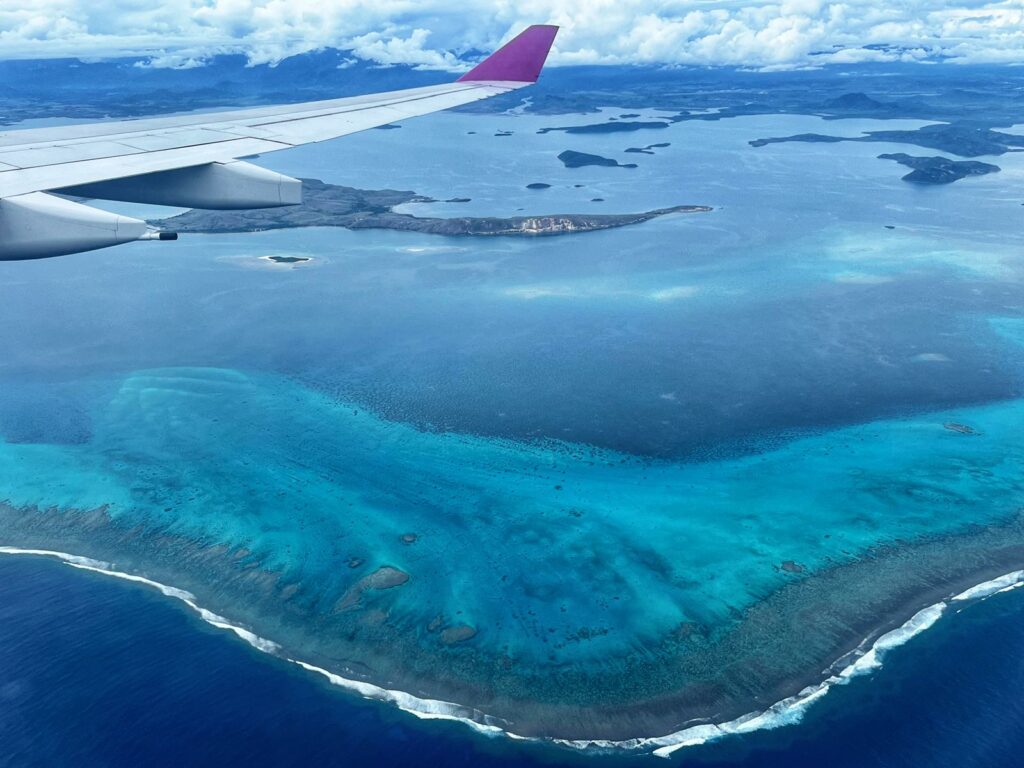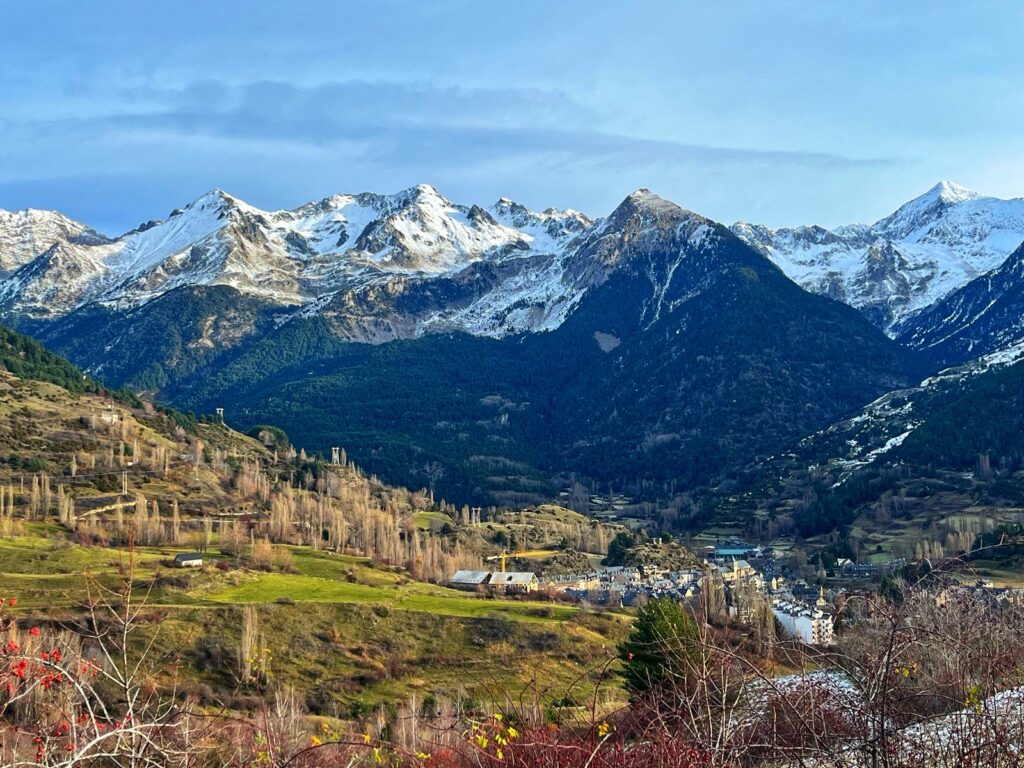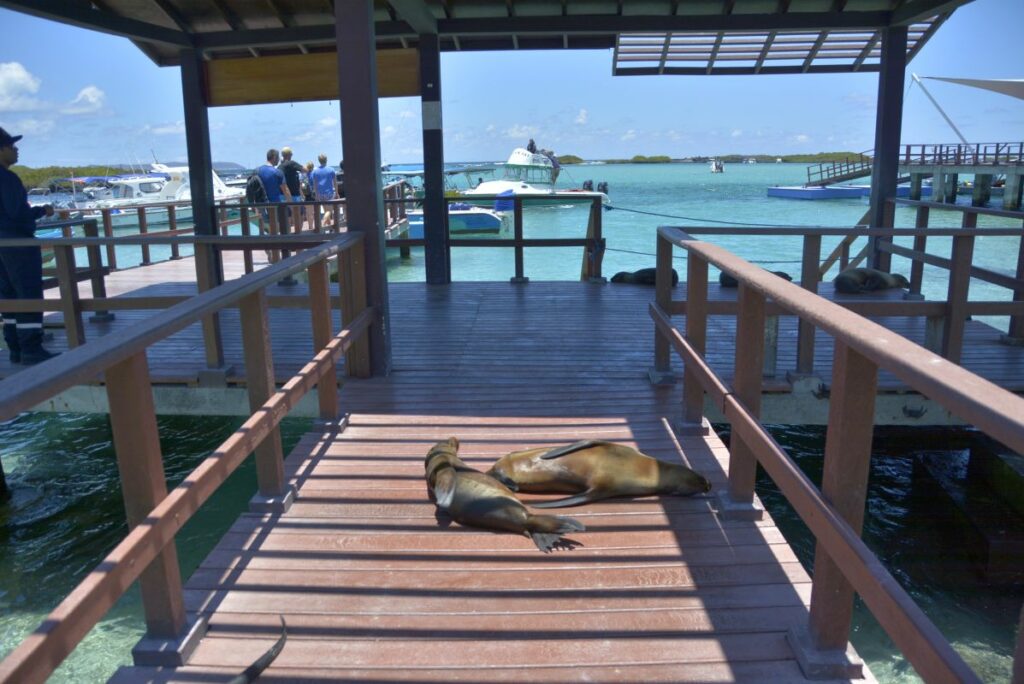Just landed in Sumba? Welcome to the Wild, Wild West! Sumba, located in the province of East Nusa Tenggara, is often referred to as the “forgotten island” of Indonesia. Sumba is a real taste for adventure! If you’re someone who loves exploring off-the-beaten-path locations and is looking for a remarkable journey through mostly untouched land – Sumba is your destination!
I couldn’t wait to land in Sumba, get a motorbike and just hit the road through the unknown. Traffic is very low, road infrastructure very challenging and the island is occupied by one of the most friendly indigenous people I’ve ever met! After exploring the whole island by myself, I’ll guide you on how to travel around Sumba and what to expect. So buckle up, especially if you are a solo visitor and lets make the most out of your adventurous journey.
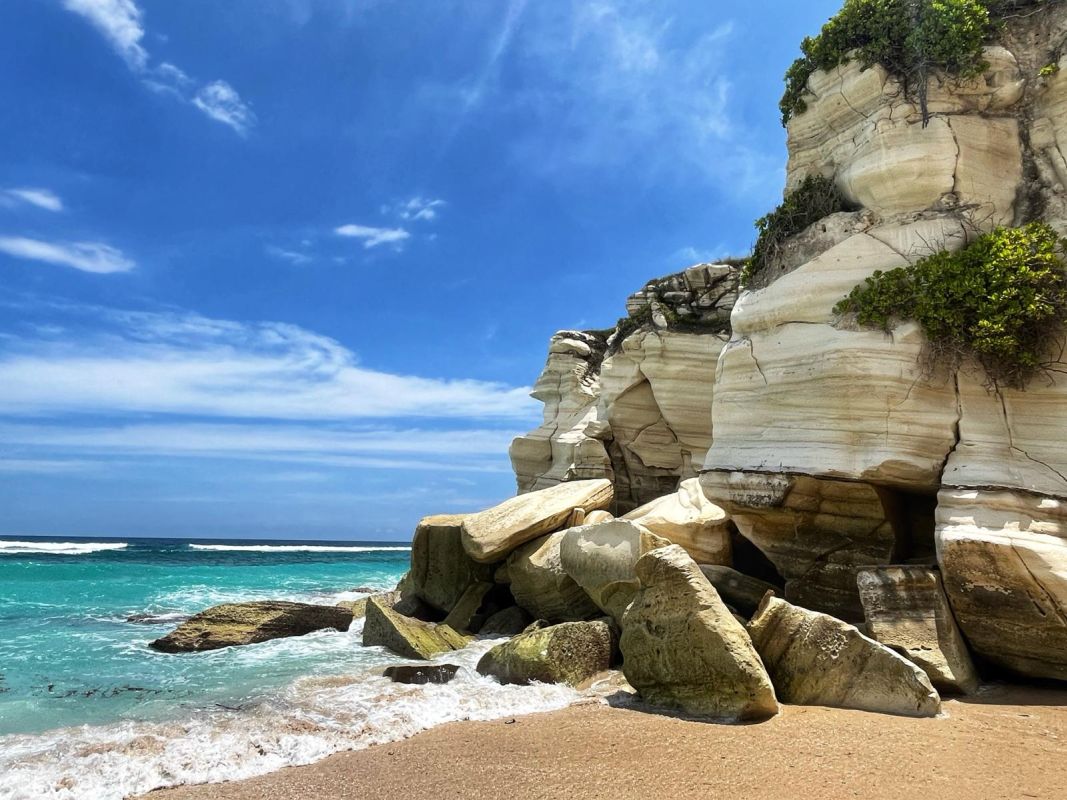
How to travel around Sumba - the Indonesian treasure.
Sumba is a completely different experience to Bali, very few things are organized here when it comes to tourist infrastructure. There are few regular buses running between major cities but due to cheap price and long travel time you will find them crowded and slow.
In Tambolaka airport you are basically landing in the middle of the bush .. which is absolutely charming! Now you have a chance to explore this lesser-known, highly unique Indonesian island. Watching how quickly the island is developing, in few years time, it will surely becaome a popular tourist destination. Sumba is a true paradise for unspoilt nature, white sand empty beaches and fascinating hundreds years old traditions. The tribes have been living in Sumba island for thousands of years!
It is important to say you should travel in respect to local customs, way of life and traditions. Once you get a chance to see Pasola Festival or tribe village you will understand there is a beautiful dynamic spirit sleeping in locals hearts.
How to get to Sumba Island?
There are TWO ways to get to Sumba Island – by air and by sea.
FLIGHT. The best way to reach the island is by flying into Tambolaka Airport (TMC) on the west or Waingapu Airport on the east. Both airports have regular flights from major Indonesian cities such as Jakarta, Bali, and Kupang. Flights are really cheap if you book them in advance, check skyscanner.com for best deals. I booked return flight (NAM Air) from Bali a week in advance for less than 100$. The flight is only 50 minutes. Other local airlines: Wings Air, Citilink (Airportia).
FERRY. The cheapest way to get from Bali to Sumba is by ferry but it takes 2 days. The costs is around: Rp450000 – Rp600000.
Tambolaka Airport (TMC), Southwest Sumba Regency, East Nusa Tenggara known as Bandar Udara Tambolaka and amazing view of Rinjani Volcano in Lombok Island.
Never travel without medical insurance.
After years of trying different insurance options, I finally found the one that is going to stay with me for the rest of my travels – SafetyWing /which also covers adventure sports/.
Although medical insurance is not required by law, you should never skip or under-insure yourself just to save money.
Medical insurance saves you lots of troubles in case of any emergency or a situation when your trip doesn’t go as planned – whether it comes to your travel, luggage or most importantly health.
Sumba Island travel kit - what to bring.
There are few things I would advise to get before getting to Sumba – there’s only basic stuff in Sumba shops. If you are coming from Bali – you are facing a completely different travel reality.
- SIM CARD – DrimSIM.com helps a lot – first universal SIM card and free app for travelers. Wifi even in hotels is quite weak, if you want to move around you need SimCard with data.
- ACCOMMODATION: Agoda.com has a good range of different type of stays. Book your place in advance, surprisingly in March /still rainy season/ quite a lot of bungallow villas were booked out.
- SUN LOTION – Minimum filter 50, difficult to get one in Sumba.
- ATMs: At the airports and major cities. Card payments are only accepted in major cities and resorts.
- There is NO GRAB, no taxis. Check below all ways on how to travel around Sumba.
How to get from Tambolaka airport to your hotel?
Both airports (Tambolaka and Waingapu) are very small but well organized. It takes 15 minutes to pick up your luggage.
There will be some local drivers gathering at the airport entrance, however they mostly offer motorbike ride, that would not work with a luggage. If you have a possibility arrange your pick up through your hotel.
Alternatively, you can stay for 1-2 nights (like I did) in Hotel Pasola – which is 3 minutes walk from Tambolaka airport exit. The hotel rooms are very decent and one of the cheapest on the island. Staying there for 2 nights was a great option for me, as I had to organize everything myslef, knowing nothing about the island.
How long to stay in Sumba?
The island is undeveloped, it will take time to travel around Sumba reaching all the amazing sites- like waterfalls, local villages or remote beaches. I would say you need at least a week or even 10 days to explore the island.
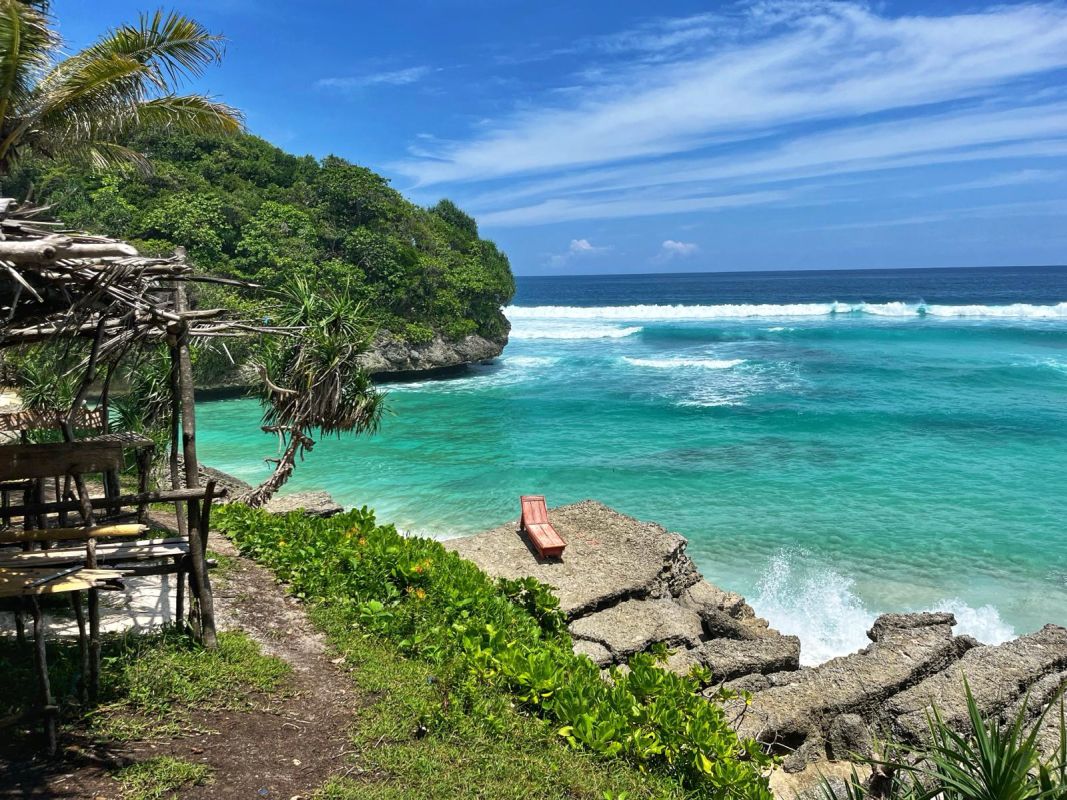
Best time to visit Sumba.
Best time to visit Sumba is during dry season – from April till October. However I was there in March, weather forecast was bad and I though I will be soaking wet for the most of the days. At first the heat was undescribable.. then it rained only few afternoons for max. 1 hour and there was one rainy day during. My guide told me 2024 is an extremely dry year and there will be hunger in Sumba due to lack of rainfall to grow rice. Rice is the main source of food in the island. The prices of rice have increased significantly and huge part of Sumba society already cannot afford to buy enough to feed the family.
How to explore Sumba Island.
OK – I have landed completely unprepared for Sumba. I had no idea where to stay or what to explore. I was so busy hiking Mount Agung and Batur Volcano and traveling around Bali that simply had no energy left after the extreme Mount Agung night hike.
So, if you are in a similar situation you have two options: get Hotel Pasola for 1-2 nights – it’s located 3 minutes walk from the airport gate – it’s a great idea to book yourself there for the start. It’s basic but decent, staff is helpfull and very nice, and they have 24h great black coffee available, which I needed a galon. They gave me a contact for a motorbike rental – a lovely lady – Adriana. She can come and pick you up.
You can always ask the locals gathering at the airport to take you around to choose the place that suits you if you want to get closer to the beach.
Get to know local traditionas and festivals.
The most beautiful and unique side of the island are traditional festivals and Sumba’s people.
THE PASOLA FESTIVAL (must see!!) is one of the most famous and significant traditional festivals celebrated in Sumba. It is an annual war ritual held in February or March in west parts of Sumba (I was very lucky to witness it).
THE 1001 SANDALWOOD HORSE PARADE is a unique event aiming to showcase the cultural heritage and traditions of the Sumba people.
WULLA PODDU is another significant festival in Sumba, celebrated to honor the Marapu spirits.
VISIT TRADITIONAL SUMBA VILLAGES: Lamboya, Kampung Prai Ljing, Ratenggaro or Wanokaka.
Watch Pasola Festival.
One of the most renowned ceremonies is the Pasola Festival – traditional spear-throwing ritual that takes place annually in February or March in few places of west Sumba. It’s a trilling spectacle which you cannot miss, where participants (from different tribes) on horseback engage in mock battles throw wooden spears at each other. The festival is also a window into the islanders’ spiritual beliefs and connection with nature.
Is Sumba expensive?
Accommodation: Less options and more expensive than in Bali.
Motorbike rental: There are only few motorbike rentals in Sumba, rental price 100.000-150.000Rp/per day – make sure a motorbike is in a good condition. You may want to check Adriana, she has a small rental near the airport: +62 813 8478 8440.
Car rental: approx. 1.000.000Rp/per day without a driver, 1.300.000Rp with a driver/per day.
Food: Cheaper than Bali but don’t expect many fancy restaurants. Coconut: 10.000Rp or more near beach areas. No durian in hotels – in case you are thinking of trying this fruit – this is your answer on how smelly it is. 😉
Shops: small shops are available around the island.
Currency – Indonesian Rupiah: 1USD = 15 IDR.
What to see in north-west Sumba?
Traveling around north-west Sumba is relatively easy, as there is a decent road leading along the coast west direction. Most interesting spots in this area are:
- WAIKURI LAGOON – amazing blue lagoon where you can swim, jump, relax.
- MANDORAK BEACH – nice beach, famous photo spot,
- RATENGGARO VILLAGE – one of the oldest traditional villages in Sumba. You can spot wild horses on the beach near the village.
- BWANNA BEACH – famous for giant rocks.
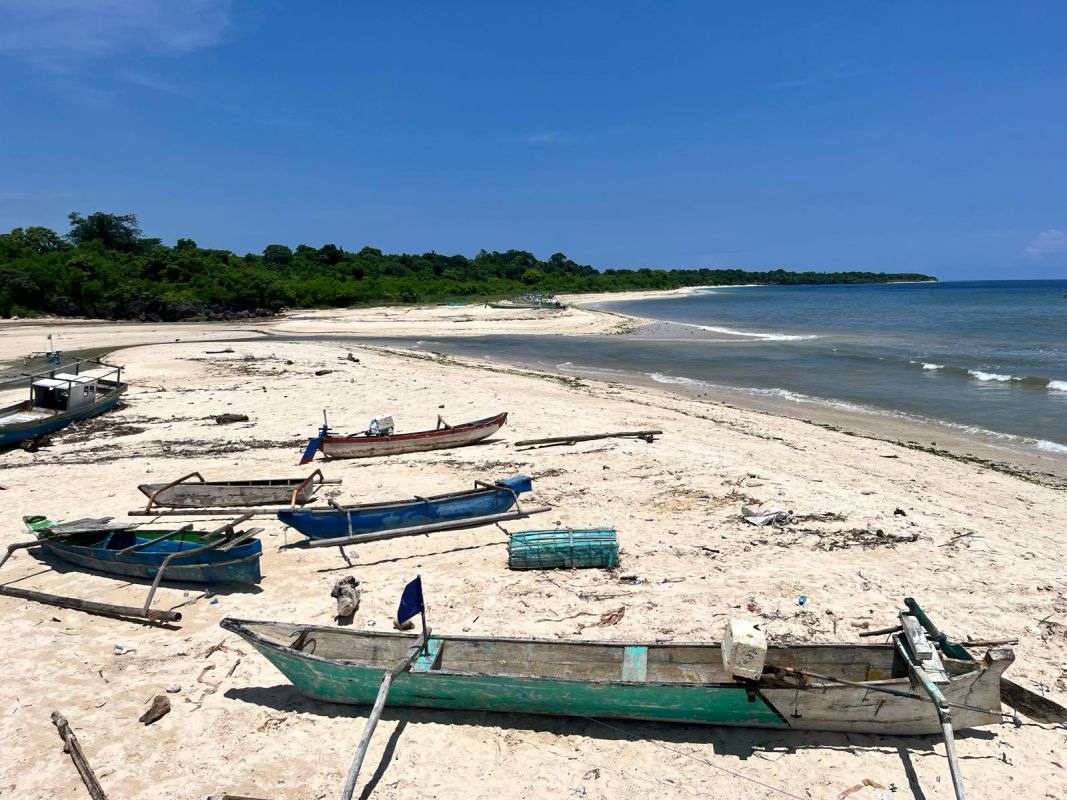
Best stays in north-west Sumba.
These are my few best recommendations for stays on the north-west coast of Sumba:
- ORO Beach Houses – in my opinion the best option on the west coast – Oro Beach is located at one of the most amazing white sand beaches.
- Mario Hotel & Cafe – also a great option with an outdoor pool, located at the beach.
- Sima Sumba Hotel – 4* hotel.
Luxury:
- Maringi Sumba by Sumba Hospitality Foundation
- Cocokabanas – 5 star private villa
What to see in the south of Sumba?
If you are traveling to Tarung Waikabubak, you are probably going to explore those two exceptional destinations – Pantai Watu Bella (beach) and Kampung Prai Ljing (traditional village) – the most beautiful Sumba village.
Nihi Sumba – one of the most famous resorts of the island is also located in the south beach area, best-known for wild horses wondering along the ocean shores.
Pantai Watu Bella.
PANTAI WATU BELLA – in my opinion the most beautiful beach on the island with incredible white rock formations and bungallows on the cliff. Getting to the beach might not be easy, the road is very poor and 20 kilometres drive takes at least 1.5 hours to drive. However, even locals say it is worth getting there.
Kampung Prai Ljing Village.
Kampung Prai Ljing is an exceptional looking, unique in its buildings, traditional village in Sumba. There is an entrance of 35.000Rp. and you can walk up the hill exploring the village, taking closer look at the original settlements.
Eco-friendly accommodation in Sumba.
There are lots of stays in traditional villages or eco-friendly accommodations. These accommodations offer a unique experience, allowing to live like a local and appreciate the island’s authenticity. You can find traditional houses, known as “uma mbatangu,” or eco-friendly resorts that blend seamlessly with the surrounding nature. Some of the bungallows are open-type accommodation. It’s an opportunity to disconnect from the modern world and enjoy the simplicity and charm of Sumba.
Best stays in south-west Sumba.
Accommodation in south cost of Sumba might be a little more expensive than in the rest of the island, two very nice stays located near the beach Sumba Retreat Kerewe or Sumba Beach House.
Sumba Timur - east part of Sumba Island.
Sumba Timur starts from Lewa town toward west. You’ll be surprised how different is Sumba Timur to the rest of the island. Waingapu is the main airport city.
There are many amazing natural wonders to be discovered in this part of the island.
If you are into hiking there are few options: green hills of Bukit Wairinding, Grand Canyon of Sumba – Air Terjun Tanggedu, or toward to hidden waterfalls like Lapopu or Waimarang.
Where to stay near Waingapu?
I stayed in Padadita Beach Hotel – really comfy hotel rooms, tasty restaurant food and amazing pool facilities, especially at sunset time.
Similar accommodation standard offers Morinda Villa and Resto or Hars Garden Sumba. You can browse all accommodation options on Agoda.com.
Is Sumba safe for solo female travelers?
I traveled the island solo, firstly on a motorbike, then with a private driver and eventually by a local transport and the island seemed very safe. Locals are wonderful people, everyone I met on the island was gentle and friendly.
My motorbike broke in the middle of the island and I was saved by a lovely lolcal, who gave me a ride to their village, where I was all by myslef. I was impressed by their hospitality and friendliness, they helped navigate the driver to find the place and come and pick me up.
The only advise I have: If you are traveling by a motorbike don’t leave it in a remote place. Make sure it is left somewhere near a shop or a restaurant.
How to travel around Sumba?
As mentioned before, the island is still quite undeveloped when it comes to tourist infrastructure, thus there are limited ways on how to travel around Sumba. I tried all the below transportation while exploring the island:
MOTORBIKE: renting a motorbike can be a fantastic option, however due to roads condition you may find difficult reaching some of the places. Goole maps are not accurate (it doesn’t even show some roads) and you may easily get lost. I used motorbike for up to 50km journeys and it worked fine.
LOCAL BUSES: Oww yeah! They leave every hour from the main cities – good luck 😉 I’m the first to use local transport in Asia and I have traveled thousands of kilometres in local buses but Sumba local buses are tiny, slow, crowded with people sitting on the roof. However the mini bus between Tambolaka and Waingapu is a doable option, still slow but relativley comfortable (read below).
CAR RENTAL: One of the most popular ways is to hire a driver or rent a car. This gives you the freedom to explore the island at your own pace, stopping wherever you please to soak in the stunning views or interact with the locals. There are various car rental agencies available in Tambolaka and Waingapu, offering a range of vehicles to suit your needs (but I would definitely suggest 4WD car).
PRIVATE GUIDE WITH A CAR: If you want to explore the furthest corners of the island you would probably need to hire a driver for few days. Driving and navigating in most parts of the island is very challenging. Berto, although he doesn’t speak English, he knew exactly where to take me, so I could experience traditional Sumba. Private guide will cost around $80-$90 per day.
Another option is going with an organized tour, since I’ve heard the prices of such tours can be enormous, Viator offers very affordable 4 days/3 nights exploration trip across west and east part of Sumba.
How to get to Tambolaka from Waingapu?
Private car is an option, but it costs around 1.000.000Rp, unless you are sharing with other passengers.
I love using local transport and interact with locals. If you choose to travel more adventurous way you can take local transportation – mini bus – Travel Sinar Lombok. Ask your hotel to book a bus ticket for you in advance and the bus will come and collect you from your hotel in Waingapu. The ticket is only 100.000Rp, they say a journey takes 4h to Tambolaka but it’s not true 😉 it takes around 7hours, the driver has many packages to deliver across the island! But the bus is comfortable, there are only around 10-12 seats in the mini bus. He will drop you at your final destination/hotel. There is a stopover half-way in a local restaurant, where you can grab some food. Locals are lovely, just smile.
Local guide in Sumba.
Sumba’s roads can be challenging, with some parts being unpaved and rough and some parts are simply a nightmare to drive. Google map doesn’t always show the right way. I have explored some parts of the island on a motorbike on my own but for long distances you need a tour or a locar guide with a private car.
For those seeking a unique cultural experience while traveling around Sumba, hiring a local guide/driver can enhance your journey, because they are knowledgeable about the island’s history, traditions, and best sites. I found Berto – lovely man, great leader and a driver. He took me to remote villages, where you can witness traditional ceremonies, meet friendly locals, and learn about their way of life. Engaging with the local community is not only a memorable experience but also a way to support sustainable tourism in Sumba.
Private guide in Sumba.
Despite the fact Berto doesn’t speak English, he took care of my itinerary in a best possible way! Language is not an issue anymore since we have online translators. Berto is a very wise man, which is important during multi-days travels, he knows every corner of the island and will make sure to showcase any attraction worth seeing. I only have his WhatsApp: Berto +62 813 5353-2312. You might mention mine name but you don’t need to. We had wonderful trip through the whole island. Note, he will not lead you to hidden waterfalls or canyons – this requires hiring a local guide for single attraction.
Trekking the island.
Most waterfalls and canyons would be only accessible by walking. If you want to explore Lapopu Waterfall, Tanggedu Waterfall (the Grand Canyon of Sumba) or Wairinding Hill (Bukit Wairinding) you need to go on a trekking adventure.
Lalpou Waterfall might require a local guide, the trail is not obvious. Tanggedu Waterfall and Wairinding Hill are much easier to navigate and the trail is quite well visible.
Best beaches in Sumba.
- Waikuri Lagoon – amazing blue water lagoon (west coast).
- Pantai Watu Bella – white rocks beach (south coast)
- Nihiwatu Beach – wild horses spot (south coast)
- Pantai Tarimbang – empty white sand paradise beach (south-east coast)
- Pantai Walakiri – famous for dancing trees (mangroves), (north-east coast – on the photo).


